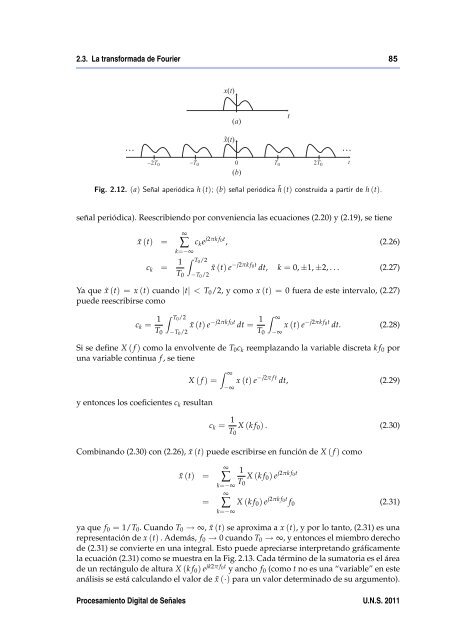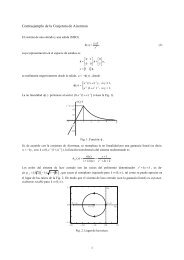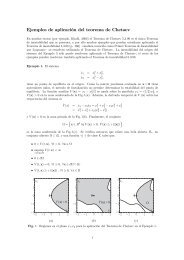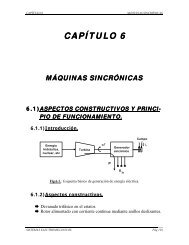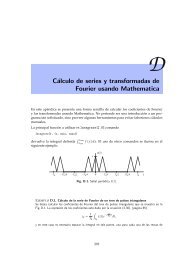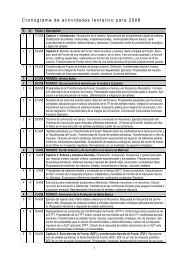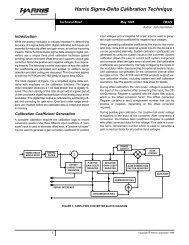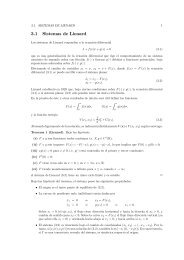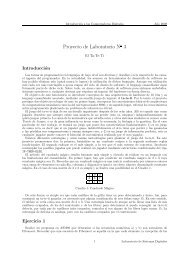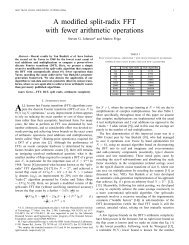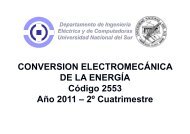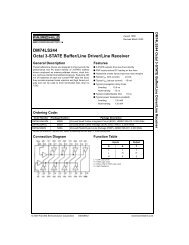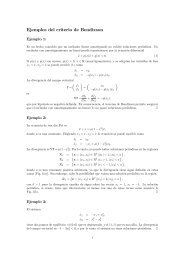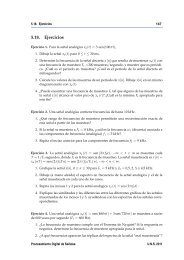2.3. La transformada <strong>de</strong> <strong>Fourier</strong> 85Fig. 2.12. (a) Señal aperiódica h (t); (b) señal periódica ˜h (t) construida a partir <strong>de</strong> h (t).señal periódica). Reescribiendo por conveniencia las ecuaciones (2.20) y (2.19), se tiene˜x (t) =∞∑ c k e j2πk f0t , (2.26)k=−∞c k = 1 Z T0 /2T 0˜x (t) e −j2πk f0t dt, k = 0, ±1, ±2, . . . (2.27)−T 0 /2Ya que ˜x (t) = x (t) cuando |t| < T 0 /2, y como x (t) = 0 fuera <strong>de</strong> este intervalo, (2.27)pue<strong>de</strong> reescribirse comoc k = 1 T 0Z T0 /2−T 0 /2˜x (t) e −j2πk f 0t dt = 1 T 0Z ∞−∞x (t) e −j2πk f 0t dt. (2.28)Si se <strong>de</strong>fine X ( f ) como la envolvente <strong>de</strong> T 0 c k reemplazando la variable discreta k f 0 poruna variable continua f , se tieneX ( f ) =y entonces los coeficientes c k resultanZ ∞−∞x (t) e −j2π f t dt, (2.29)c k = 1 T 0X (k f 0 ) . (2.30)Combinando (2.30) con (2.26), ˜x (t) pue<strong>de</strong> escribirse en función <strong>de</strong> X ( f ) como˜x (t) ==∞∑k=−∞1T 0X (k f 0 ) e j2πk f 0t∞∑ X (k f 0 ) e j2πk f0t f 0 (2.31)k=−∞ya que f 0 = 1/T 0 . Cuando T 0 → ∞, ˜x (t) se aproxima a x (t), y por lo tanto, (2.31) es unarepresentación <strong>de</strong> x (t) . A<strong>de</strong>más, f 0 → 0 cuando T 0 → ∞, y entonces el miembro <strong>de</strong>recho<strong>de</strong> (2.31) se convierte en una integral. Esto pue<strong>de</strong> apreciarse interpretando gráficamentela ecuación (2.31) como se muestra en la Fig. 2.13. Cada término <strong>de</strong> la sumatoria es el área<strong>de</strong> un rectángulo <strong>de</strong> altura X (k f 0 ) e jk2π f 0t y ancho f 0 (como t no es una “variable” en esteanálisis se está calculando el valor <strong>de</strong> ˜x (·) para un valor <strong>de</strong>terminado <strong>de</strong> su argumento).Procesamiento Digital <strong>de</strong> Señales U.N.S. 2011
86 2. Análisis <strong>de</strong> <strong>Fourier</strong>Fig. 2.13. Interpretación gráfica <strong>de</strong> la ecuación (2.31).De acuerdo con la interpretación <strong>de</strong> Riemann <strong>de</strong> la integral, cuando f 0 → 0 la sumatoria<strong>de</strong> (2.31) converge, por <strong>de</strong>finición, a la integral <strong>de</strong> X ( f ) e j2π f t . De acuerdo entonces alhecho que ˜x (t) → x (t) cuando T 0 → ∞, las ecuaciones (2.31) y (2.29) se convierten enx (t) =X ( f ) =Z ∞−∞Z ∞−∞X ( f ) e j2π f t d f , (2.32)x (t) e −j2π f t dt, (2.33)respectivamente. Las ecuaciones (2.32) y (2.33) se <strong>de</strong>nominan par transformado <strong>de</strong> <strong>Fourier</strong>;la ecuación (2.33) se <strong>de</strong>nomina transformada <strong>de</strong> <strong>Fourier</strong> <strong>de</strong> x (t) , o ecuación <strong>de</strong> análisis,mientras que la ecuación (2.32) es la transformada inversa <strong>de</strong> <strong>Fourier</strong> <strong>de</strong> X ( f ) , o tambiénecuación <strong>de</strong> síntesis. La ecuación <strong>de</strong> síntesis (2.32) juega un papel similar al <strong>de</strong> la ecuación(2.19) para las señales periódicas, ya que ambas tratan <strong>de</strong> la <strong>de</strong>scomposición <strong>de</strong> una señalcomo una combinación lineal <strong>de</strong> exponenciales complejas. Para señales periódicas estasexponenciales tienen amplitud c k dadas por (2.20) o (2.27), y sus frecuencias toman valoressobre un conjunto discreto k f 0 , k = ±1, ±2, . . . armónicamente relacionadas entresí. Para el caso <strong>de</strong> las funciones aperiódicas, las exponenciales complejas ocurren paraun continuo <strong>de</strong> frecuencias, y <strong>de</strong> acuerdo a la ecuación <strong>de</strong> síntesis (2.32) tienen “amplitud”X ( f ) d f . En analogía con la terminología empleada para los coeficientes <strong>de</strong> la serie<strong>de</strong> <strong>Fourier</strong> <strong>de</strong> una señal periódica, la transformada X ( f ) <strong>de</strong> la señal aperiódica x (t) se<strong>de</strong>nomina el espectro <strong>de</strong> x (t) , ya que brinda información referida a cómo se combinanondas sinusoidales <strong>de</strong> distinta frecuencia para componer la señal x (t) .2.3.2. <strong>Transformada</strong> directa e inversa <strong>de</strong> <strong>Fourier</strong>Sea x(·) una función real o compleja <strong>de</strong> una variable real s. A veces, x(·) pue<strong>de</strong> no estardisponible explícitamente como función, sino como un conjunto <strong>de</strong> valores discretos. Sinembargo, para fijar i<strong>de</strong>as se asume que x(·) está <strong>de</strong>finida en el intervalo (−∞, ∞), y quetiene algunas propieda<strong>de</strong>s, entre ellas las <strong>de</strong> ser absolutamente integrable sobre la líneareal. Esto significa queZ ∞|x (s)| ds < ∞. (2.34)−∞Si éste es el caso se pue<strong>de</strong> <strong>de</strong>finir una función X(·) que evaluada en el punto f toma elvalorZ ∞X ( f ) = x (s) e −j2π f s ds, −∞ < f < ∞ (2.35)−∞Procesamiento Digital <strong>de</strong> Señales U.N.S. 2011


